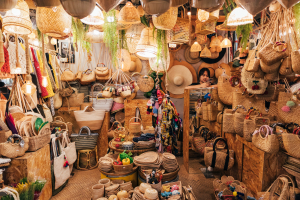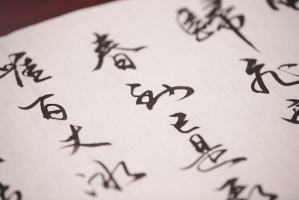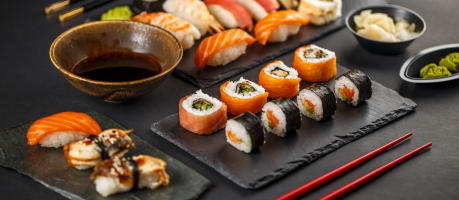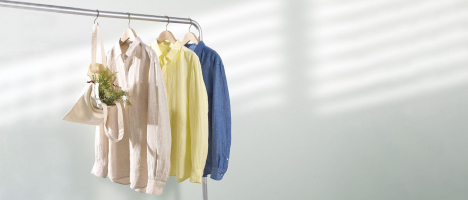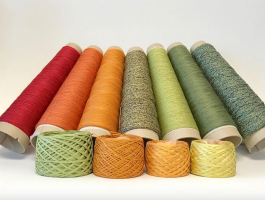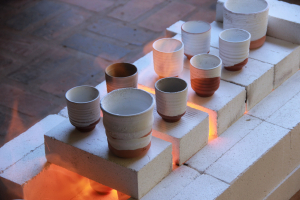Top 12 Best Japanese Souvenirs to Take Home from Japan
When it comes to choosing the best Japanese souvenirs to take home from Japan, there are numerous options that reflect the country's rich culture, ... read more...craftsmanship, and unique traditions. Here are some popular and highly recommended Japanese souvenirs.
-
Maneki-neko, also known as the "beckoning cat," is a traditional Japanese figurine that is believed to bring good luck, fortune, and prosperity to its owner. The figurine depicts a cat with one paw raised in a beckoning gesture. It is often placed in businesses, shops, and homes as a symbol of good fortune.
The raised paw of the Maneki-neko is believed to beckon good luck and fortune into the establishment or home. The cat's other paw rests on a coin, representing wealth and prosperity. The colors and decorations on the figurine also have symbolic meanings. For example, a calico-colored cat is said to bring the best fortune, while a gold-colored cat symbolizes wealth and prosperity.
Maneki-neko figurines come in various sizes, designs, and materials. They can be made of ceramic, porcelain, wood, or plastic. Some Maneki-neko have a mechanical arm that moves back and forth, simulating the beckoning gesture.
The paw position of the Maneki-neko holds different meanings. A raised right paw is believed to attract money and good fortune, while a raised left paw is said to attract customers or people. Some Maneki-neko have both paws raised, which is considered to bring overall good luck.
Maneki-neko figurines are commonly displayed near the entrance of shops, restaurants, and homes, facing the entrance or storefront. Placing the figurine by a window is believed to invite good fortune into the space. It is important to avoid placing the Maneki-neko in a low or disrespectful position, such as on the floor or facing outward from the establishment.
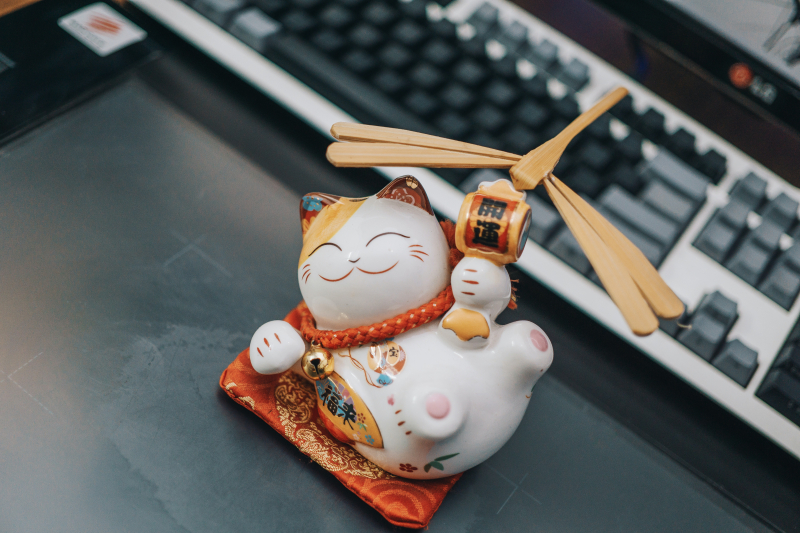
screenshot via https://www.instagram.com/manekineko.official/ 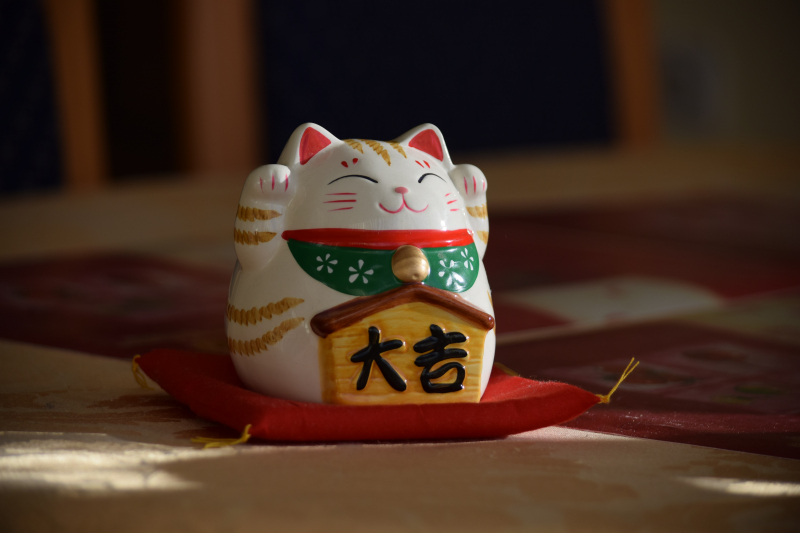
screenshot via https://www.instagram.com/manekineko.official/ -
Japanese fans, known as "sensu" or "uchiwa," are elegant and functional accessories that have a rich history in Japanese culture. They are not only used to provide relief from the heat but also serve as decorative items and tools for traditional dances, tea ceremonies, and performances.
Sensu refers to folding fans, which are compact and portable. They consist of a series of bamboo ribs connected by a paper or silk material. The ribs fold together, allowing the fan to be opened or closed with ease. The material of the fan is often adorned with beautiful artwork, calligraphy, or traditional Japanese motifs, making each fan a work of art in itself. Sensu can be found in various colors and designs, ranging from simple and minimalist to intricate and vibrant.
Uchiwa, on the other hand, refers to non-folding fans that have a rigid structure. They are typically made of a round or rectangular frame made of bamboo or wood with decorative paper or fabric stretched across it. Uchiwa fans are larger and more suitable for creating a gentle breeze on hot summer days. They are often adorned with colorful illustrations, patterns, or traditional scenes.
Japanese fans have both practical and cultural significance. They are commonly used by individuals to cool themselves during hot and humid weather. Fans are also employed as accessories for traditional dances, such as the graceful fan dances performed in the Japanese geisha culture. Additionally, fans are sometimes used in tea ceremonies, where they are used to gently fan the charcoal to maintain the ideal temperature for brewing tea.
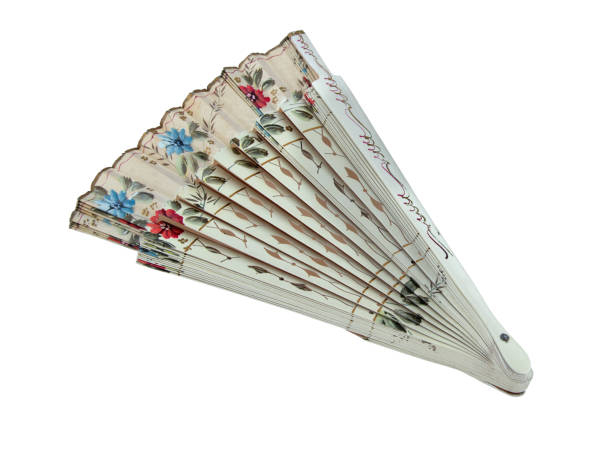
screenshot via pexels.com 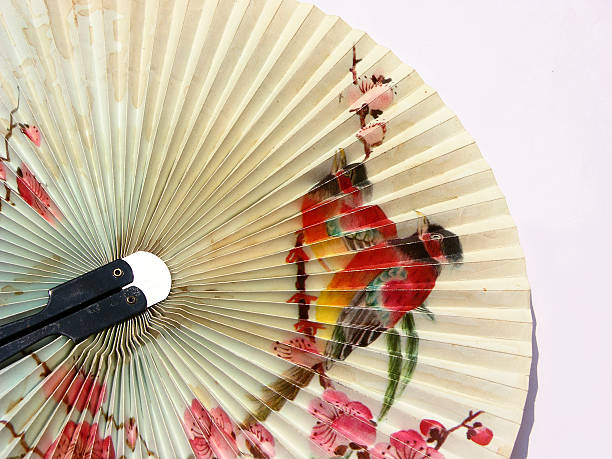
screenshot via pexels.com -
Goshuincho is a traditional Japanese notebook used to collect goshuin, which are special stamps or seals obtained at temples and shrines in Japan. The purpose of goshuincho is to serve as a record book, commemorating visits to these sacred places and receiving blessings.
Goshuincho is typically designed as a compact and portable notebook. The cover is often made of durable material like silk or cloth and decorated with intricate patterns or traditional motifs, reflecting the aesthetic beauty of Japanese culture. Some goshuincho may have a hardcover or be bound like a traditional Japanese book.
Inside the goshuincho, you will find blank pages specially designed to receive the goshuin stamps. These pages are made of high-quality washi paper, which is thick and smooth to prevent ink from smudging. Each page typically has a designated area for the stamp, along with spaces to record the date, temple or shrine name, and any additional notes.
When visiting a temple or shrine, you present your goshuincho to the priest or monk to receive a goshuin stamp. The stamp is usually created with a calligraphy brush and ink, bearing the name and insignia of the specific place you visit. Each goshuin stamp is unique, making it a treasured and one-of-a-kind memento.
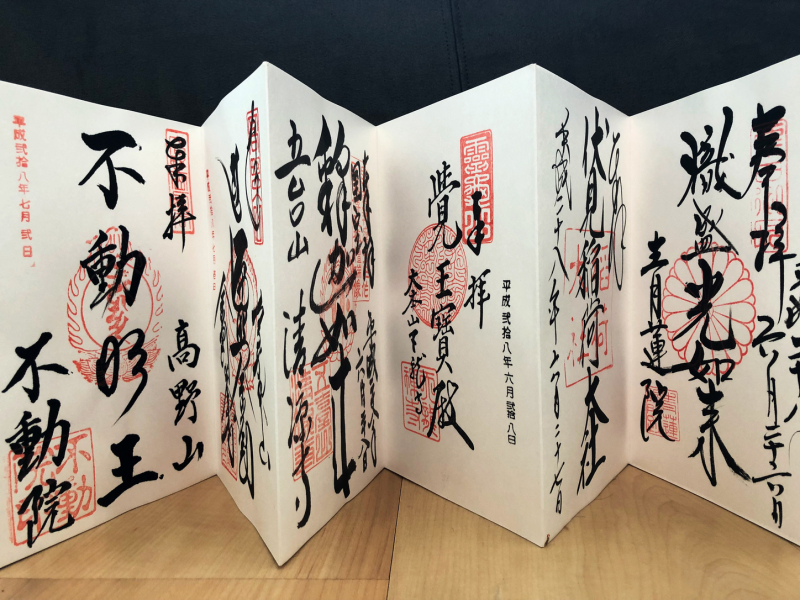
Screenshot via arigatojapan.co.jp 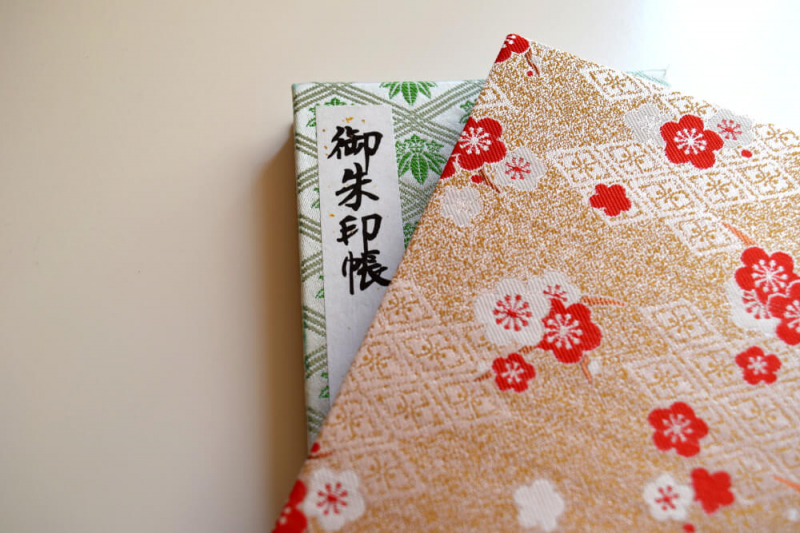
Screenshot via arigatojapan.co.jp -
Kokeshi dolls are traditional wooden dolls that originate in Japan. They are known for their simplistic yet charming designs and have been popular for many years. The dolls are typically handcrafted from a single piece of wood and are characterized by their cylindrical body, rounded head, and absence of arms or legs.
Kokeshi dolls are often painted with vibrant colors and intricate patterns. The designs can vary greatly, with some dolls featuring floral motifs while others may have geometric or abstract patterns. The dolls' facial expressions are usually minimalistic, with simple lines and dots representing the eyes, nose, and mouth.
These dolls have a rich history and are deeply rooted in Japanese culture. They are believed to have originated in the Tohoku region of Japan in the early 19th century. Originally, kokeshi dolls were made by local craftsmen as toys for children. However, over time, they became cherished collectibles and souvenirs.
Each region in Japan has its own distinct style of kokeshi dolls, characterized by specific techniques and designs. The most well-known styles include the Naruko, Tsuchiyu, and Yamagata kokeshi. These dolls have different shapes, colors, and patterns, reflecting the unique traditions and craftsmanship of their respective regions.
In addition to their aesthetic appeal, kokeshi dolls also hold symbolic meaning. They are often given as gifts to express friendship, love, and well-wishes. Some people believe that kokeshi dolls bring good luck and serve as protectors against evil spirits. They are also regarded as a representation of the beauty and simplicity of rural life in Japan.
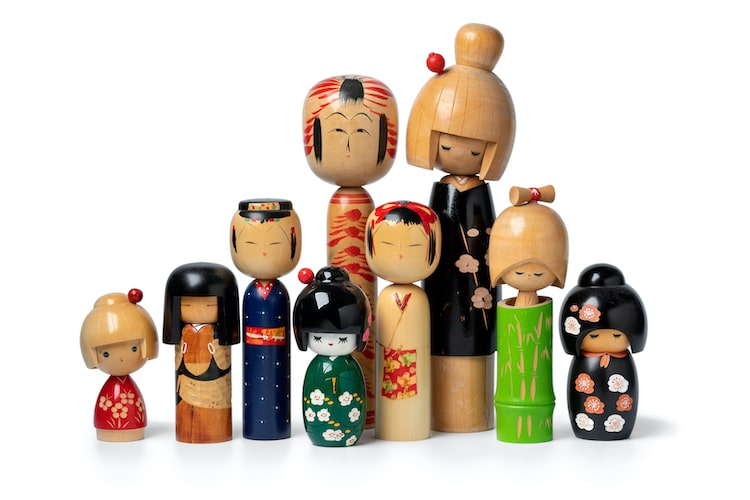
Screenshot via booksandbao.com 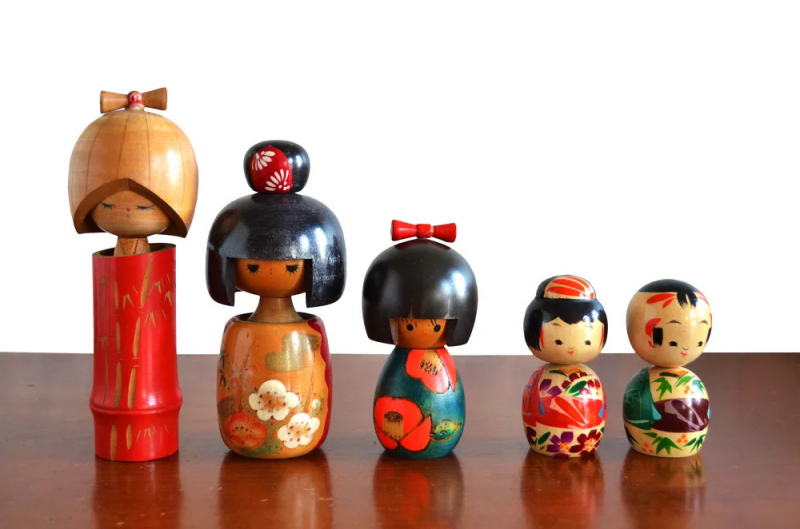
Screenshot via booksandbao.com -
Daruma dolls, also known as Dharma dolls, are traditional Japanese talismans that symbolize perseverance, goal-setting, and good luck. These dolls are typically made of papier-mâché and are modeled after Bodhidharma, the founder of Zen Buddhism.
Daruma dolls have a distinctive round shape with a solid, weighted bottom that allows them to always return to an upright position when tilted. They are usually painted red and feature simple facial features, such as large white eyes and an absent mouth. The eyes are left blank when the doll is purchased, and the owner is encouraged to paint in one eye while making a wish or setting a goal.
The daruma doll serves as a visual reminder of the goal or wish that the owner has set. By painting in one eye, it symbolizes the commitment to achieving that goal. The other eye is left blank, representing the unfinished task. Once the goal is accomplished or the wish is fulfilled, the second eye is painted, signifying the completion of the objective.
The Daruma doll embodies the spirit of perseverance and determination. It reminds individuals to stay focused and resilient in the face of challenges and obstacles. The process of painting the eyes acts as a personal motivation and a constant reminder of the goal at hand.
Daruma dolls are often used in various Japanese traditions and ceremonies. They are commonly displayed in homes, offices, and temples, serving as a source of inspiration and encouragement. During New Year's celebrations, many people buy new daruma dolls, paint one eye, and then burn the old ones as a symbolic gesture of renewal and starting fresh.
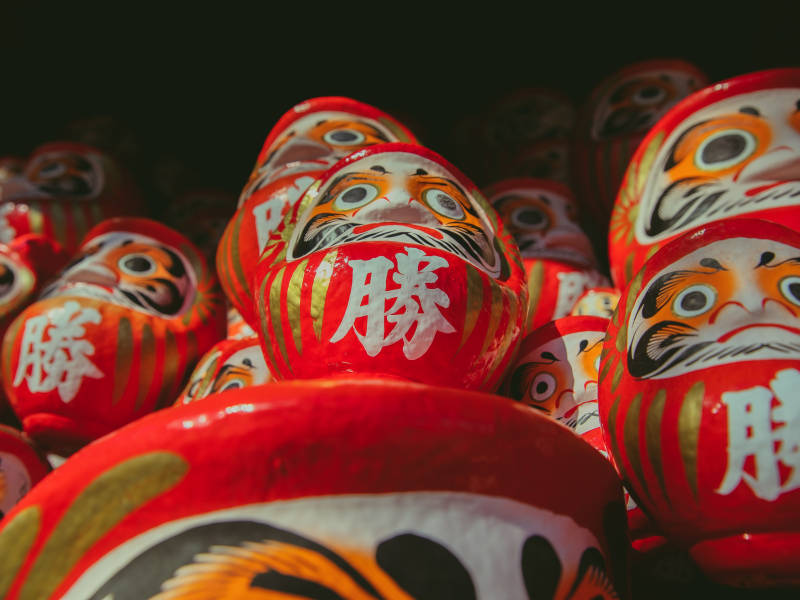
Screenshot via pexels.com 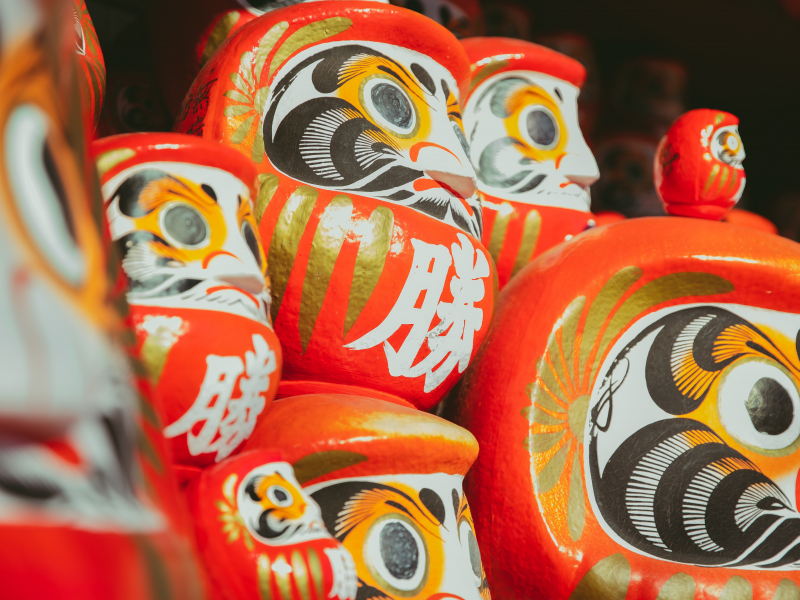
Screenshot via pexels.com -
Matcha powder is a vibrant green powdered tea that is made from specially grown and processed green tea leaves. It has a rich history in Japanese tea ceremonies and has gained popularity worldwide for its unique flavor and numerous health benefits.
Matcha powder is made from shade-grown tea leaves known as tencha. The tea plants are covered with shade cloths for several weeks before harvesting, which increases the chlorophyll content and gives the leaves their distinctive green color. After harvesting, the leaves are steamed, dried, and finely ground into a fine powder using traditional stone mills.
Matcha has a rich, umami flavor with grassy and slightly sweet undertones. Its unique taste profile is a result of the shading process and the high concentration of amino acids, especially L-theanine. Matcha also has a distinct and pleasant aroma.
Matcha is traditionally prepared by whisking the powder with hot water using a bamboo whisk called a chasen. The powder is whisked vigorously until it forms a frothy and smooth beverage. The preparation process is an integral part of the Japanese tea ceremony, known as chanoyu.
Matcha powder is not only used for tea preparation but also has a wide range of culinary applications. It can be used to flavor and color various dishes, including desserts, ice cream, cakes, smoothies, and even savory dishes like pasta or sauces. Its vibrant green color adds a visually appealing touch to food.
Matcha is highly regarded for its health benefits. It is rich in antioxidants, particularly catechins, which have been linked to various health advantages such as reducing inflammation, boosting metabolism, and supporting cardiovascular health. Matcha also contains caffeine, which provides a more sustained energy boost compared to coffee due to the presence of L-theanine.
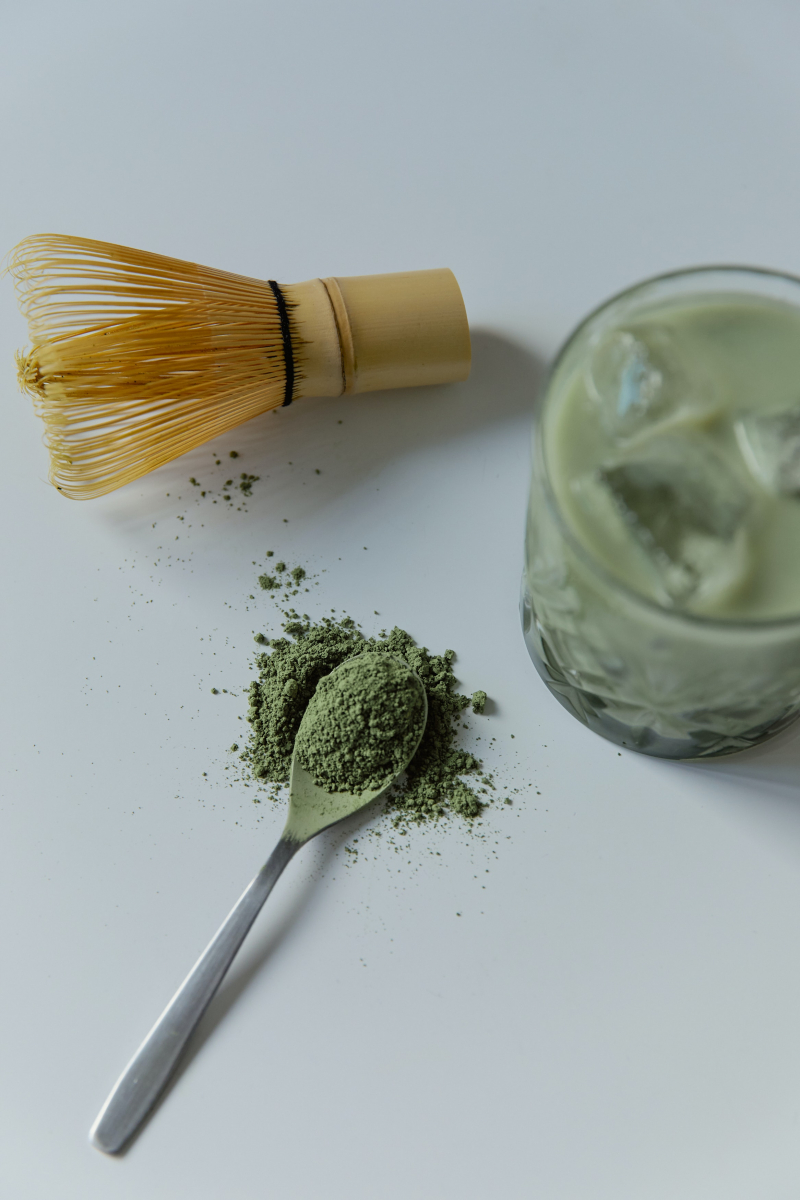
Screenshot via pexels.com 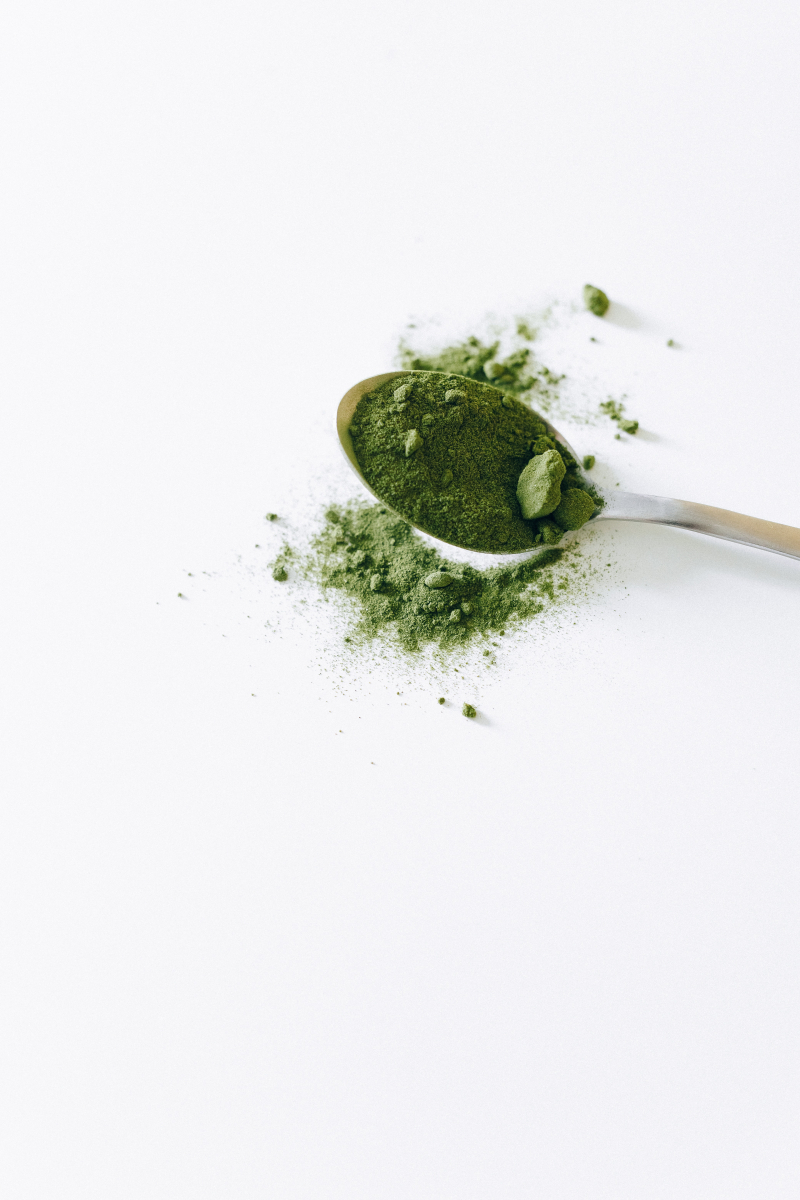
Screenshot via pexels.com -
Japanese whisky has gained international recognition and acclaim for its exceptional quality and craftsmanship. Inspired by Scotch whisky production techniques, Japanese distilleries have perfected their own unique style and flavor profiles.
The history of Japanese whisky dates back to the early 20th century. Whisky production in Japan was initially influenced by Scotch whisky, with distilleries like Yamazaki, Yoichi, and Hakushu drawing inspiration from Scottish traditions.
Japanese whisky follows the traditional whisky-making process, which includes mashing, fermentation, distillation, maturation in wooden barrels, and blending. Japanese distilleries often incorporate local ingredients, such as indigenous types of barley and water sourced from pristine mountain streams.
Japanese whisky is known for its smoothness, balance, and complexity. Distillers focus on achieving a harmonious combination of flavors, with notes of fruit, floral, spice, and malt often present. The use of different types of casks, including American oak, sherry, and Mizunara (a rare Japanese oak), contributes to the unique character of Japanese whiskies.
Japan is home to several renowned whisky distilleries. The Yamazaki distillery, established in 1923, is considered the birthplace of Japanese whisky. Other notable distilleries include Nikka's Yoichi and Miyagikyo, Hakushu, Chichibu, and Mars Shinshu.
Japanese whiskies have received numerous international awards and accolades, with several brands earning global recognition for their exceptional quality. In blind tasting competitions, Japanese whiskies have often competed and triumphed against well-established Scotch whiskies.

Screenshot via pexels.com 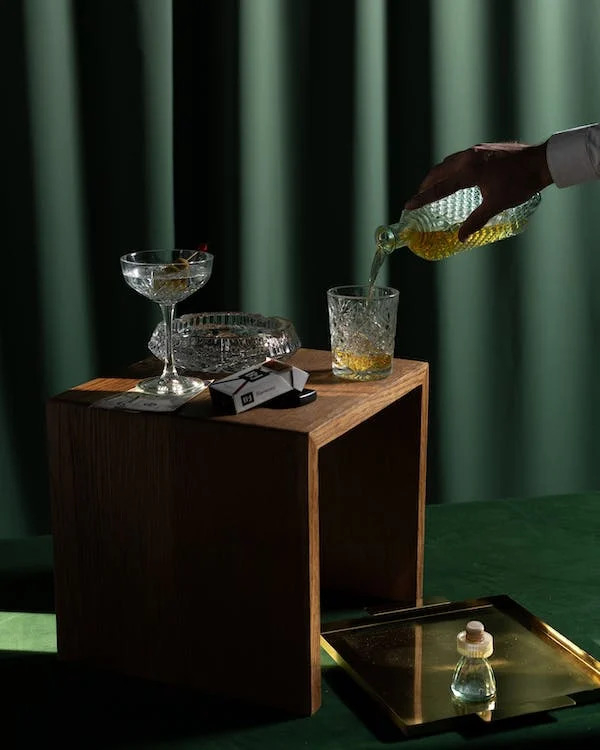
Screenshot via pexels.com -
Wagashi refers to traditional Japanese sweets that are typically enjoyed with tea. These delicate and artistic confections have a long history and are deeply rooted in Japanese culture. Wagashi come in a wide variety of shapes, colors, and flavors. They can be classified into different types, such as nerikiri, mochi, dorayaki, yokan, and manju. Each type has its own distinct characteristics and ingredients.
Wagashi are made using natural and seasonal ingredients, including glutinous rice flour, sweet bean paste (anko), agar-agar, matcha (powdered green tea), fruits, and edible flowers. Anko, made from azuki beans, is the most common filling used in wagashi. It can be smooth or chunky, with varying degrees of sweetness.
One of the distinguishing features of wagashi is its exquisite presentation. The sweets are meticulously crafted with attention to detail, reflecting the aesthetics of Japanese culture. They often incorporate elements of nature, such as cherry blossoms, leaves, or seasonal motifs, and are beautifully arranged on special serving trays or in traditional lacquerware.
Wagashi is not only meant to be enjoyed for its taste but also for its symbolic significance. Many wagashi are created to celebrate specific occasions, such as festivals, tea ceremonies, or seasonal events. They often reflect the changing seasons, with ingredients and designs that highlight the colors and flavors associated with each time of year.
Enjoying wagashi is a sensory experience. The texture, fragrance, and taste of these sweets are carefully balanced to create a harmonious and satisfying moment. They are typically paired with a cup of tea, such as matcha, to enhance the overall experience.
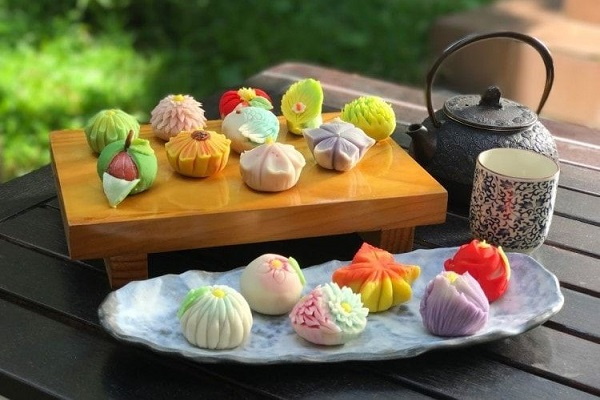
Screenshot via cet.edu.vn 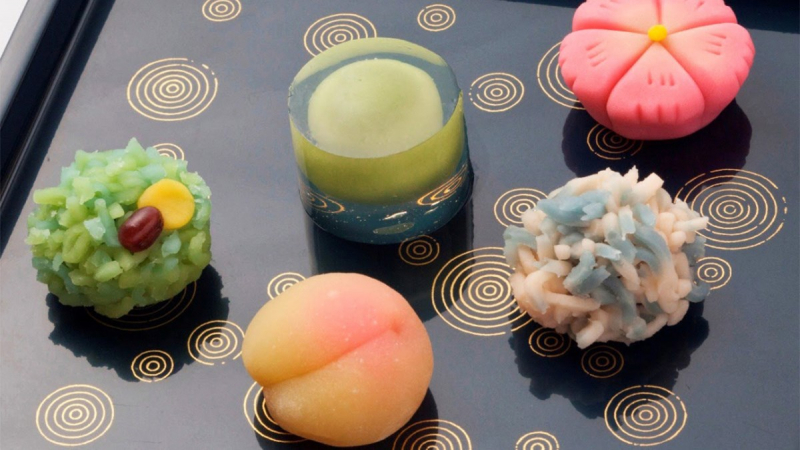
Screenshot via cet.edu.vn -
Tokyo Banana is a beloved Japanese snack that has become synonymous with the city's culinary culture. These delightful treats consist of a soft and fluffy sponge cake filled with a creamy banana custard filling. Tokyo Banana has gained immense popularity as a souvenir snack, capturing the hearts of both locals and visitors alike.
One of the notable features of Tokyo Banana is its distinctive packaging. The individually wrapped cakes are shaped like bananas, complete with a yellow exterior and a peel-like design. The eye-catching packaging adds a playful touch and makes it instantly recognizable as a Tokyo Banana.
When it comes to taste, Tokyo Banana delivers a delightful combination of flavors. The sponge cake is light and airy, providing a delicate texture that complements the creamy banana custard filling. The banana flavor is sweet and pronounced, giving the snack its unique character.
Tokyo Banana has expanded its offerings beyond the classic banana custard flavor. Now, you can find a variety of options, including chocolate-coated Tokyo Banana, matcha (green tea) flavor, caramel, strawberry, and limited-edition seasonal flavors. These variations offer exciting alternatives while still retaining the essence of the original Tokyo Banana.
As a popular souvenir choice, Tokyo bananas are widely available in Tokyo. You can find it in major department stores, souvenir shops, and specialty stores throughout the city. The Tokyo Banana Specialty Shop, located in Tokyo Station, is a particularly renowned destination for those seeking a wide range of flavors and package sizes.
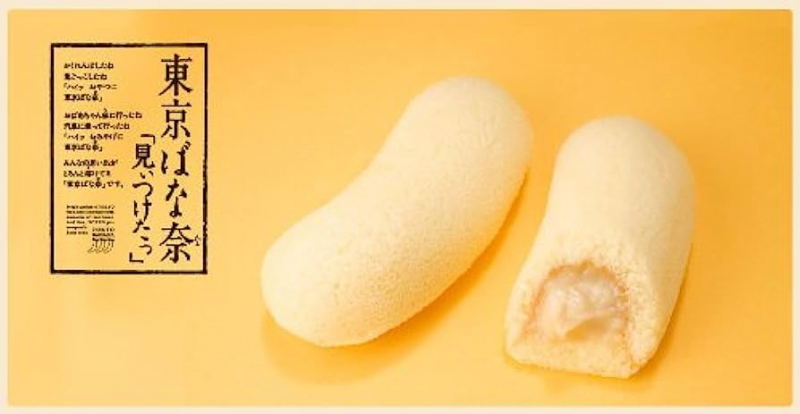
Screenshot via isetankl.com.my 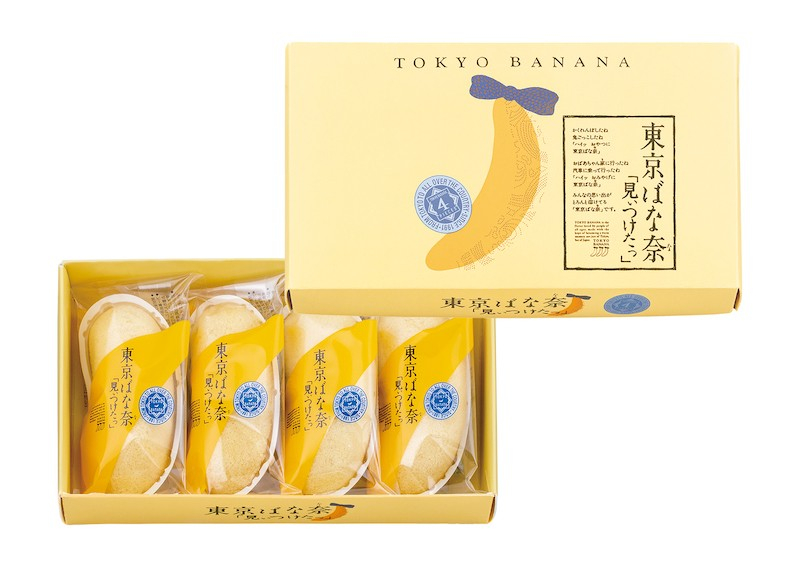
Screenshot via isetankl.com.my -
Kit Kats have become a beloved and iconic treat in Japan, renowned for their extensive variety of flavors and limited-edition releases. While the traditional chocolate-covered wafer version is widely available, Japan takes Kit Kats to a whole new level of creativity.
One of the distinguishing features of Kit Kats in Japan is the wide range of unique flavors. Japanese Kit Kats come in an array of enticing options, such as matcha (green tea), strawberry, sake, wasabi, sweet potato, hojicha (roasted green tea), melon, and many more. These flavors often reflect regional specialties or seasonal themes, making them a delightful way to explore different tastes and experiences.
Limited-edition Kit Kats are highly anticipated by fans and collectors. They are often tied to special occasions, holidays, or collaborations with local brands. These limited releases can feature flavors like cherry blossom, Halloween pumpkin, regional fruit flavors, or even character-themed designs. They create a sense of excitement and exclusivity, with enthusiasts eagerly seeking out the latest editions.
The popularity of Kit Kats in Japan has led to a culture of gifting and collecting. Kit Kats are frequently given as souvenirs or omiyage, especially when visiting different regions of Japan. The unique flavors and packaging make them a fun and memorable gift for friends, family, and colleagues. Some Kit Kat specialty stores even offer custom gift boxes where you can mix and match your favorite flavors.

Screenshot via twitter.com 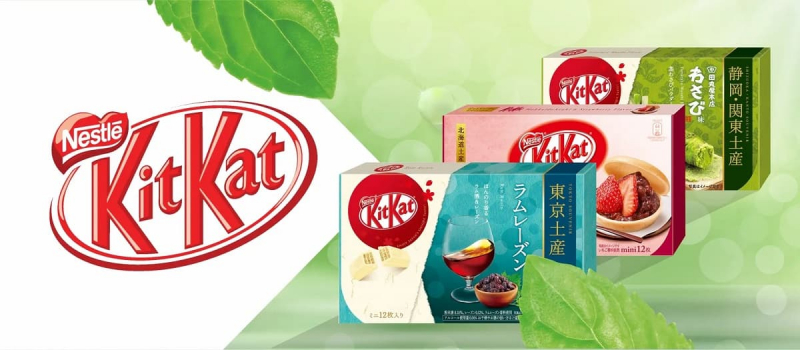
Screenshot via twitter.com -
Zabuton cushions are traditional Japanese floor cushions that provide comfort and support while sitting on the floor. They are an integral part of Japanese culture and are commonly used in traditional tatami rooms, tea ceremonies, meditation practices, and casual gatherings.
Zabuton cushions have a simple yet practical design. They are typically square or rectangular in shape and consist of a soft, padded filling enclosed in a fabric cover. The filling is often made of cotton, foam, or a combination of materials to provide a comfortable and supportive seating surface. The cover can be made from a variety of materials, including cotton, silk, or other durable fabrics, often decorated with traditional patterns or motifs.
The thickness and size of zabuton cushions can vary depending on their intended use. Thicker zabuton cushions are preferred for extended periods of sitting or for activities like meditation, providing additional comfort and insulation from the floor. Smaller zabuton cushions are more portable and convenient for casual gatherings or outdoor activities.
Zabuton cushions are designed to be placed directly on the floor, typically on a tatami mat or other soft surface. They provide a cushioned and stable seating option, promoting good posture and relieving strain on the back and joints. The cushion's softness and support allow for a comfortable sitting experience, encouraging relaxation and mindfulness.
In addition to their functional purpose, zabuton cushions are also valued for their aesthetic appeal. The fabric covers can feature intricate designs, colors, and patterns that reflect Japanese traditional art and craftsmanship. They can complement the decor of a room or serve as decorative accents on their own.
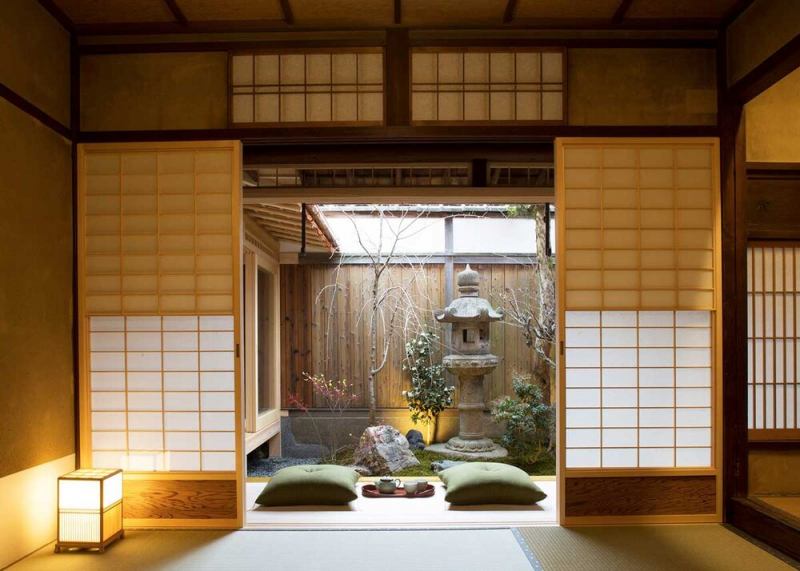
Screenshot via zafu.net 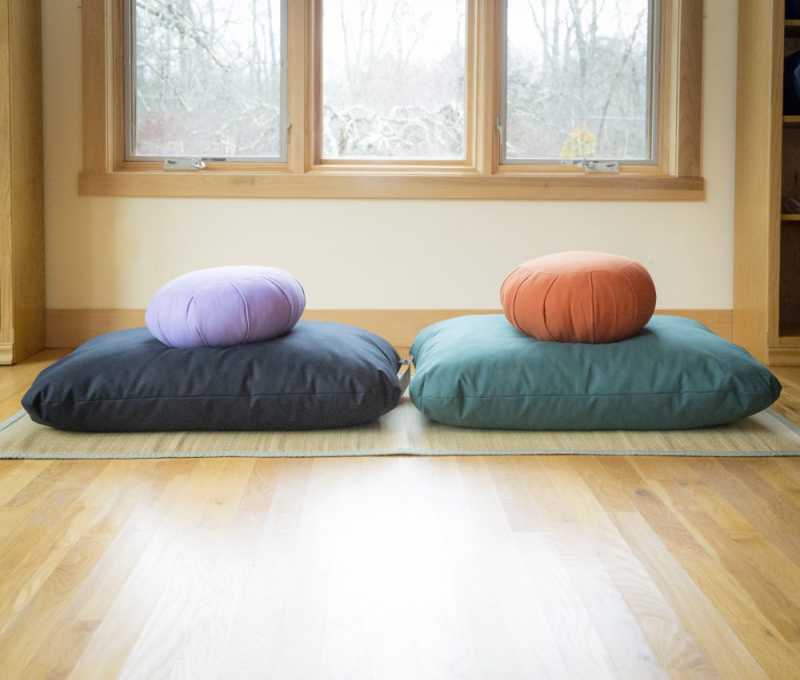
Screenshot via zafu.net -
Furoshiki is a traditional Japanese wrapping cloth that has been used for centuries. It is a versatile and eco-friendly alternative to disposable bags and wrapping paper. Furoshiki is typically made from a square-shaped piece of fabric, traditionally silk, cotton, or rayon, although modern variations can be made from other materials as well.
The design of furoshiki is not only functional but also aesthetic. The cloth is often adorned with intricate patterns, vibrant colors, or traditional motifs that reflect Japanese culture. Different sizes of furoshiki are available to accommodate various items, ranging from small gifts to larger objects.
Furoshiki is known for its versatility and adaptability. It can be folded and tied in different ways to create a wrapping for a wide range of objects. The most common techniques include the "otsukai tsutsumi" method, used for carrying items, and the "tsutsumi" method, used for wrapping gifts. The flexibility of furoshiki allows for creative and personalized wrapping styles.
Apart from its wrapping purposes, furoshiki has other practical uses. It can be used as a tablecloth, picnic mat, scarf, bag, or even as a decorative wall hanging. The fabric is durable and reusable, making it an environmentally friendly choice that reduces waste.
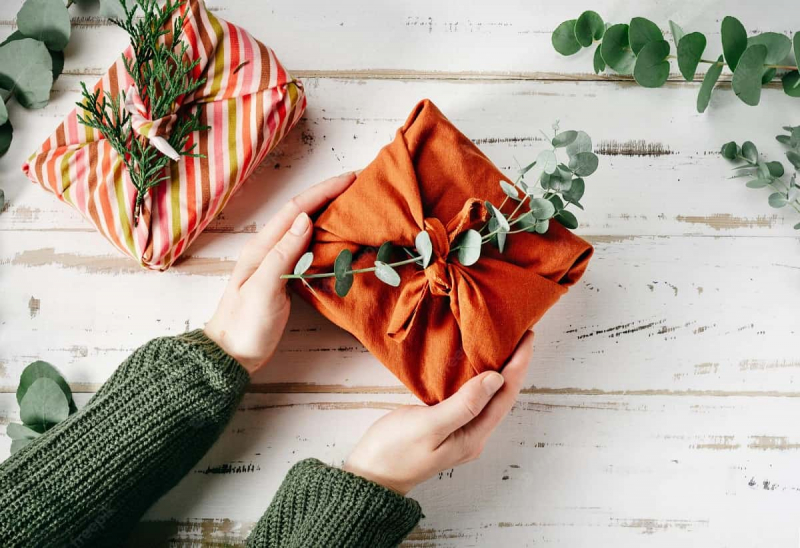
Screenshot via janbox.com 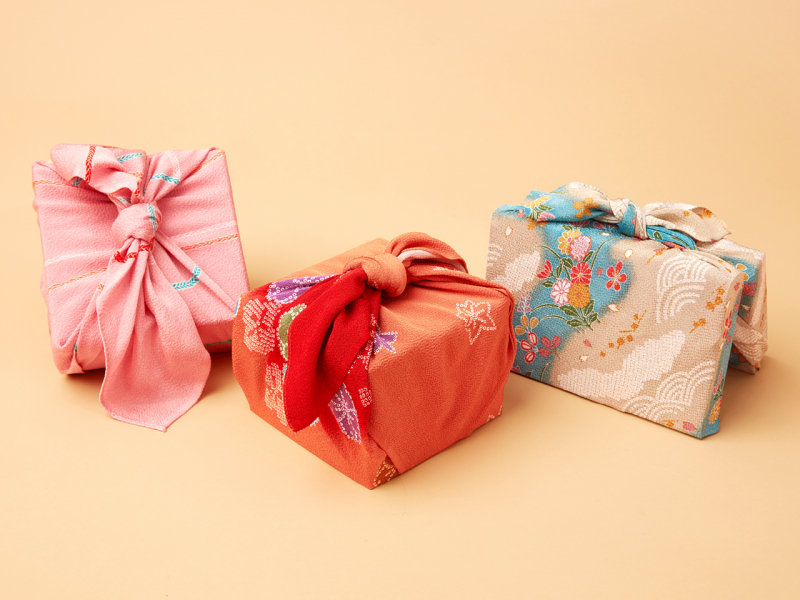
Screenshot via janbox.com














